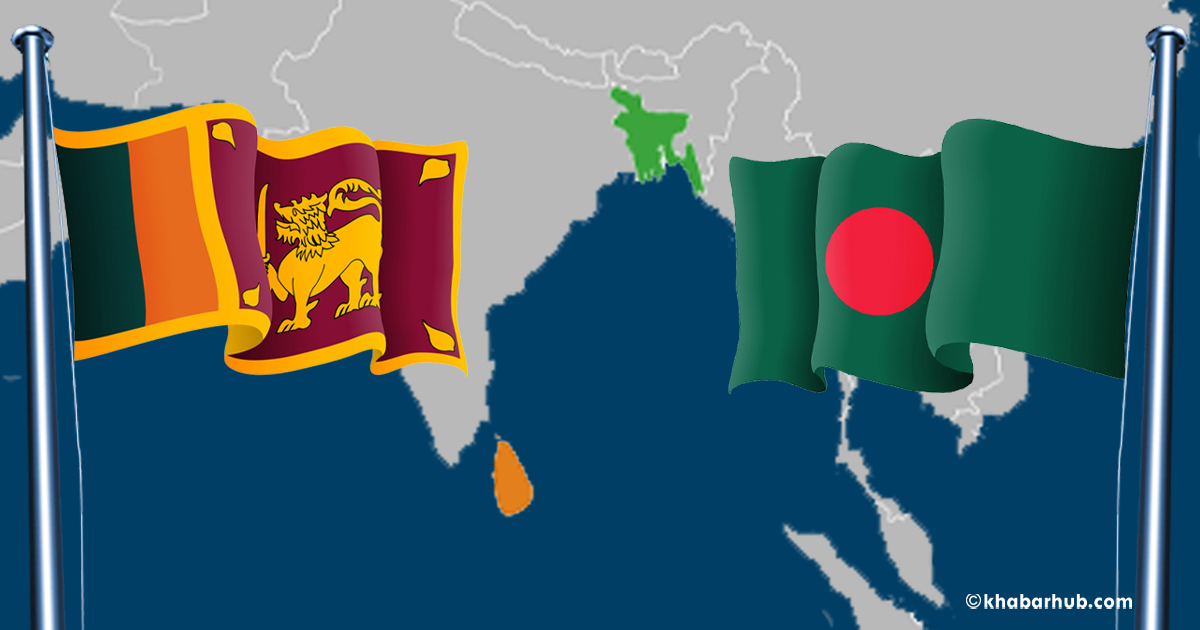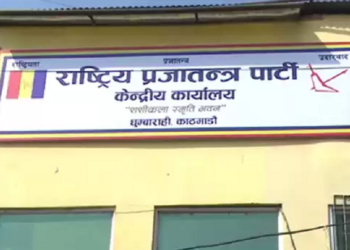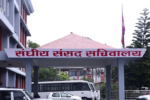The diplomatic ties between Bangladesh and Sri Lanka have grown from strength to strength over the period through impressive cooperation in political, economic, cultural, educational and defense grounds.
Successive Governments in both countries have leveraged their persistent efforts for enhancing this relationship. What we observe, over the decades, both neighboring South Asian nations have undergone remarkable foreign policy changes and have immense scope to deepen this multifaceted close friendship to flourish.
The two South Asian nations have been historically in friendship since before the subcontinent’s colonization by the British.
Building on the great traditional friendship the two nations are able to work closely through the Bay of Bengal Initiative for Multi-Sectoral Technical and Economic Cooperation (BIMSTEC) to unleash closer cooperation.
Indeed, Sri Lanka has had fruitful relations with Bangladesh since its creation in 1971. Among the eight SAARC nations, Bangladesh is important for Sri Lanka as a bilateral partner while placing high emphasis on positive bilateral engagements.
The economic, political, and cultural partnerships between Sri Lanka and Bangladesh have strengthened their traditionally friendly relations in order to make them significant players in the South Asia region.
Regular high-level visits in both directions serve to cement and expand bilateral relations that are mutually beneficial in all spheres.
The two South Asian nations are also signatories to regional trade agreements namely the South Asian Free Trade Agreement (SAFTA) giving Bangladesh and Sri Lanka preferential market access to over 1.6 billion people.
Building on the great traditional friendship the two nations are able to work closely through the Bay of Bengal Initiative for Multi-Sectoral Technical and Economic Cooperation (BIMSTEC) to unleash closer cooperation.
As set in the Bangkok Declaration of 1997, the core objective of BIMSTEC is to create an enabling environment for rapid economic development through the identification and implementation of specific cooperation projects in trade, investment, industry, technology, human resource development, tourism, agriculture, energy, infrastructure and transportation.
Unfortunately, BIMSTEC is yet to overcome limitations of its nascent stage as the member countries have deliberately failed to strategize an institutional mechanism in expediting the procedure of cooperation over the last 23 years.
The seven-member countries of the BIMSTEC could not adopt a charter since its inception. The impulse of influential member country India to promote the BIMSTEC as an alternative to the SAARC could hinder the overall progress of this regional forum.
Nonetheless, lack of institutional mechanism, lack of power of the BIMSTEC secretariat, bilateral issues between Bangladesh and Myanmar particularly on the repatriation issue of Rohingya Refugees and the influence of China in the region in the context of rivalry between India and China are hampering the BIMSTEC process.
In addition to air connectivity, both countries are exploring means of enhancing maritime connectivity to boost their economies.
Over the course of the last forty-seven years, the economic, political and cultural partnership between Sri Lanka and Bangladesh has grown beyond the scope of their traditionally friendly relations to become significant players in the South Asian region.
As an island economy, Sri Lanka’s regional connectivity has been mainly through its main seaport in Colombo, for south Asian countries.
Regardless of significant improvements in physical infrastructure connectivity, Sri Lanka has made only limited headway in strengthening its trade and investment links with Bangladesh over the years.
The ports of Chittagong in Bangladesh and the ports of Colombo and Hambantota in Sri Lanka are located nearly 1515 nautical miles from each other.
Robust connectivity and linkages between these ports would facilitate shipping, tourism and investments between the two countries.
Education and sports are other areas of collaboration between the two nations. Bangladesh is host to around five hundred Sri Lankan students studying in its medical and dental colleges.
Over the course of the last forty-seven years, the economic, political and cultural partnership between Sri Lanka and Bangladesh has grown beyond the scope of their traditionally friendly relations to become significant players in the South Asian region.
Although trade between the two countries has grown in terms of numbers, this does not indicate that smaller South Asian countries are now prepared to engage in more trade and investment among themselves irrespective of regional politics.
Identifying the threats arising out of terrorism, violent extremism and radicalization on any religious or societal pretext, both countries are vowed to work together towards convening a broad-based dialogue on tolerance, inclusion and pluralism in 2018.
South Asia’s huge opportunities arising from demographic dividend could be harnessed fully only if it is able to skill a large number of new entrants to the labor market every year and upskill the expanding labor force that is still under-educated and inadequately trained compared with Sri Lankan counterparts in south Asian region.
Recognizing the demographic profile and patterns of the two economies, both Bangladesh and Sri Lanka agreed to collaborate on the development of skills and human resources and encourage innovative partnerships.
In defense cooperation, there has been discussion to increase bilateral relations, cooperation between the two navies and sending Sri Lankan Naval personnel to study in Bangladesh. Recently many Bangladesh Navy ships visited Sri Lanka for goodwill visits.
From the very beginning of the bilateral relation of these two friendly nations till now, the number of cooperative agreements issued between Bangladesh and Sri Lanka.
Apart from the agreements and MoUs, top-level bilateral visits and regular communication with among the multi-sectoral official, keeping this tie uphold for almost 48 years.
During the visit of former Sri Lanka’s President Maithripala Sirisena in mid of 2017, 14 agreements and MOUs signed with the Bangladesh government in order to get comparative advantage from both ends where the major areas were education, agriculture, ICT, banking, trade, investment, shipping, tourism, etc.
This visit treats as an impulse to South-South and intra-SAARC cooperation. Previously, in 2014, his visit to Bangladesh, when Mr. Maithripala Sirisena was the Minister of Health of Sri Lanka, signed an MoU on Procurement of Pharmaceuticals and Medical Devices from Bangladesh to Sri Lanka. He also visited Bangladesh in 2013 on health sector-related issues.
South-South cooperation has become essential for Bangladesh to take a more prominent role in achieving the SDG targets by 2030, creating areas of cooperation with South Asian countries and implementing good initiatives from one country to another.
Former president of Sri Lanka Mahinda Rajapaksa visited Bangladesh in April 2011. After that, The Honorable Prime Minister of Bangladesh had a fruitful meeting with him in 2013 during ‘Commonwealth Heads of Government Meeting- CHOGM 2013’.
Apart from the Head of the State level meeting, several ministerial levels also took place and still going on. Likewise, several cooperative agreements signed in those meetings. In 2015, during the visit of former Information Minister of Bangladesh Hasanul Haq Inu, both countries agreed to accomplish an MOU on Film and Media sector for better cooperation.
Bilateral ministerial visits also continued in 2016 on health and cultural issues. Besides, Bangladesh and Sri Lanka have several bilateral agreements on shipping services, agricultural research, tertiary and vocational education, fisheries and livestock, etc.
Bangladesh and Sri Lanka are a clear example of South-South cooperation which is essential for the developing world.
This is a blessing in disguise for developing countries who should give preference to trade and cooperation among themselves instead of looking to the traditionally rich countries for conventional OECD assistance.
South-South cooperation has become essential for Bangladesh to take a more prominent role in achieving the SDG targets by 2030, creating areas of cooperation with South Asian countries and implementing good initiatives from one country to another.
Surprisingly, 14 instruments signed between Bangladesh and Sri Lanka during the President’s visit has been instrumental as an impulse to South-South and intra-SAARC cooperation.
Cooperation in coastal shipping; agriculture; education; investment; information and communication technology; and cooperation between the two central banks have gained momentum.
Bangladesh and Sri Lanka should take the lead in reinvigorating intra-region trade, even though the two countries compete for trade with the outside world in categories such as garments.
People-to-people contact is also another factor that contributes to a positive relationship. Sri Lankan Airlines already flies to Dhaka, but Biman Bangladesh should also begin flights to Colombo.
With the rise of Asia, the partnership between Sri Lanka and Bangladesh can be taken to a whole new level by being a model to be emulated by other South Asian countries for enhanced economic growth leading to economic development in the region.
The eventual easing of visa regulations on both sides will also facilitate travel between the two countries. As neighboring members of the Bay of Bengal region, both countries have many commonalities.
Our common cultural affinities and historical links have immensely nourished our modern-day inter-state relations.
Bringing up their commitment to multilateralism, both nations have acknowledged increased interaction and cooperation between the two countries on contemporary multilateral issues like climate change, disaster management, migration, health, peacekeeping, etc. at the UN and other regional and international platforms.
They further agreed to share respective knowledge, ideas, innovation to effectively realize the Agenda 2030 in the name of sustainable development goals (SDGs).
We earnestly believe, Bangladesh and Sri Lanka will keep the momentum forward to “consolidate the already excellent” relations for the benefit of their people based on a broad framework collaboration among countries of the South in political, economic, social, cultural, environmental and technical domains.
With the rise of Asia, the partnership between Sri Lanka and Bangladesh can be taken to a whole new level by being a model to be emulated by other South Asian countries for enhanced economic growth leading to economic development in the region.
(The writer is Associate Professor in Government and Politics, Jahangirnagar University, Bangladesh)









Comment